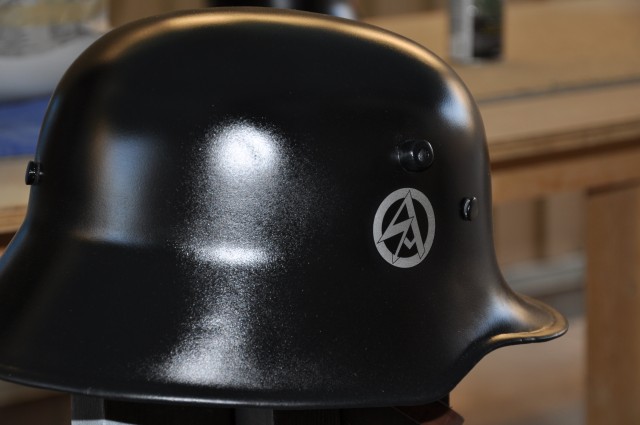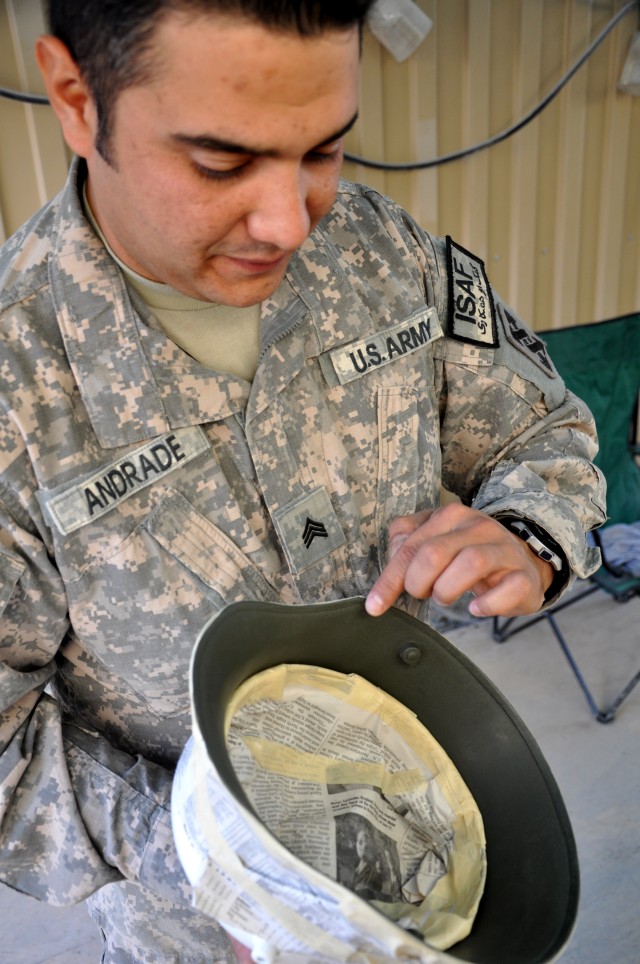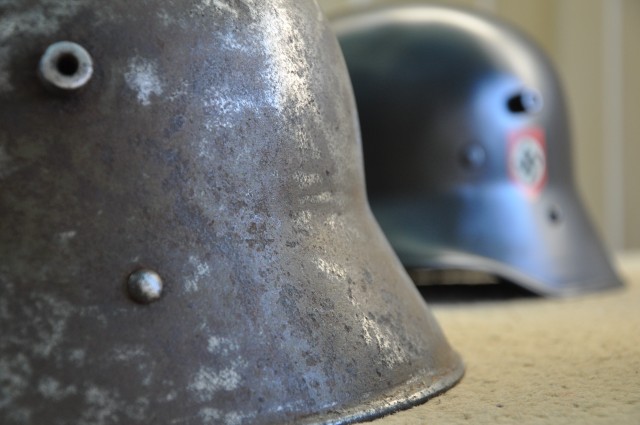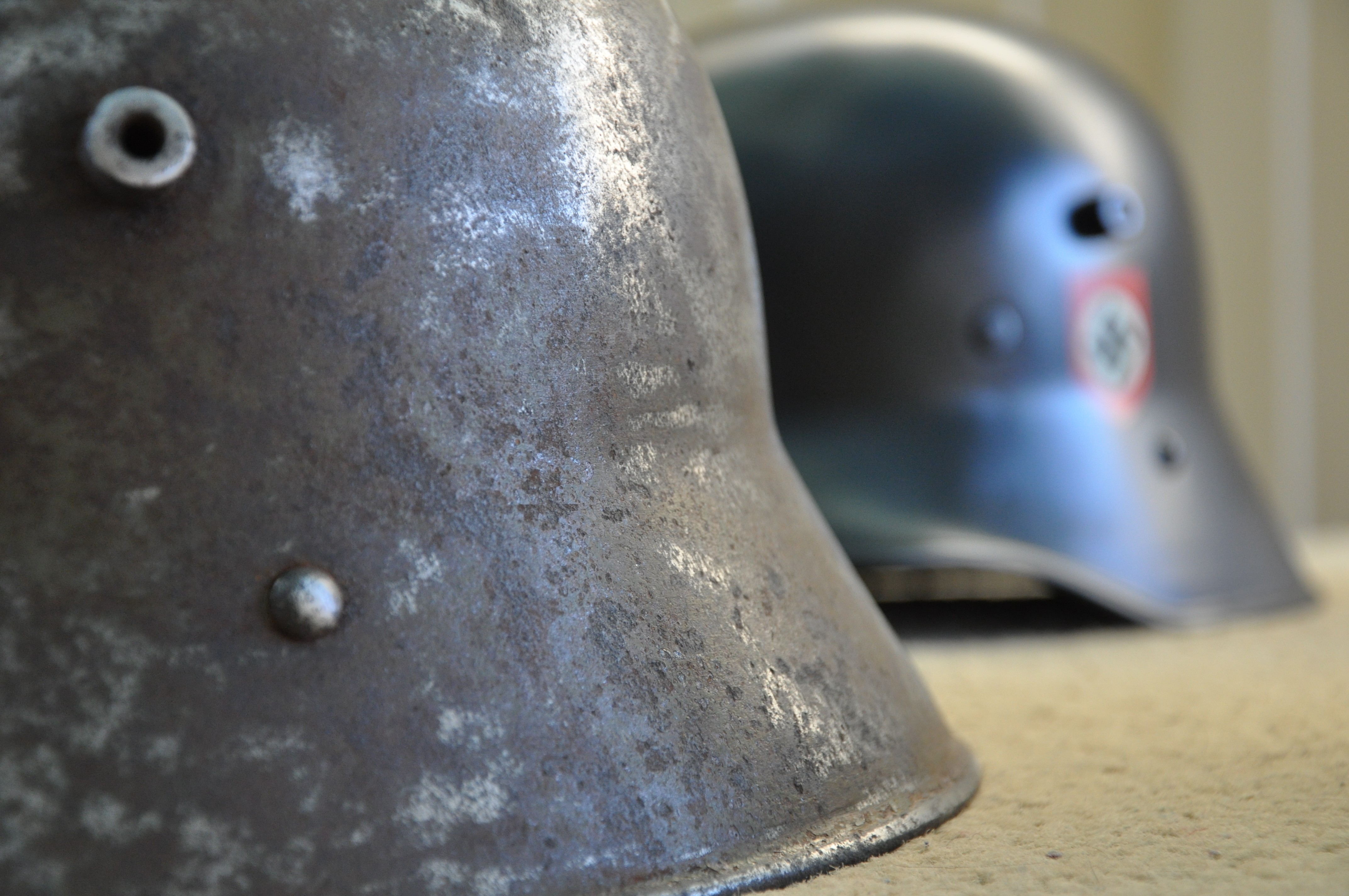KANDAHAR AIRFIELD, Afghanistan - At Kandahar Airfield's weekly bazaar, local vendors display in their colorful booths everything from jewelry to DVDs to wood carvings. For Sgt. Diego Andrade, visiting the bazaar is a chance to find pieces of history.
Andrade, a joint sustainment operations center administrator for Joint Sustainment Command-Afghanistan, and a U.S. Army reservist from Orlando, Fla., has spent years acquiring various collectibles.
"Everywhere I go, I try to pick up some type of antique," said Andrade.
Although Andrade collects such items as old phonographs, cigarette lighters, pen quills and Louis XVI style furniture, he especially enjoys obtaining military gear from World War I and World War II.
At the bazaar, Andrade noticed two rusted helmets.
"It caught my attention, because I recognized the form as an old German helmet," said Andrade.
After searching the Internet, Andrade believes the two helmets are both German steel helmets, called Stahlhelm, introduced in 1916 and used by German forces during WWI. Helmet manufacturers produced a new style in 1935, but many troops used 1916 models throughout WWII, said Andrade.
Andrade returned to the bazaar and bought one of the rusted helmets, full of holes and lacking both chinstrap and headband.
"And then the thing was what do I do with this now'" said Andrade.
Andrade found a large, international community of German helmet collectors on the Net. He followed the accepted guidelines to restore his helmet to the original regulations. Helmet color and details vary depending on the military branch.
"It was very hard for me to get the materials like paint and sandpaper," said Andrade.
Working one to two hours a day by hand without suitable materials, Andrade worked a month to restore the helmet. Presently, it takes Andrade about two weeks to restore a helmet, since he orders supplies like paint and rust remover from the Net or has family ship materials here.
"I try to have myself busy with something I like to do," said Andrade. "I love history, and I love military history."
Andrade said that cleaning takes the most time since each helmet shell has a one-eighth to one-quarter inches rust build-up. Filling any holes with liquid metal fillers, he adds rivets and hardware for headbands and chinstraps.
Good-condition original items can be expensive, but excellent copies are available, said Andrade. He buys helmet liners made on an original machine from the time period.
Andrade pays $40 to $100 apiece for a helmet from the bazaar, and then spends up to $300 restoring each helmet. Between his personal collection and those he has done for fellow troops, Andrade has restored 15 helmets.
Andrade assures he does not prefer collecting German military items more than any other country's items.
"If I had found 15 French helmets, I would have restored 15 French helmets," said Andrade. "The same with American. But I found 15 German helmets."
The bazaar vendor has started bringing in helmets specifically for Andrade, but Andrade is not sure where he finds them. Andrade notes that other countries like Austria-Hungary used a variation of the Stahlhelm.






Social Sharing